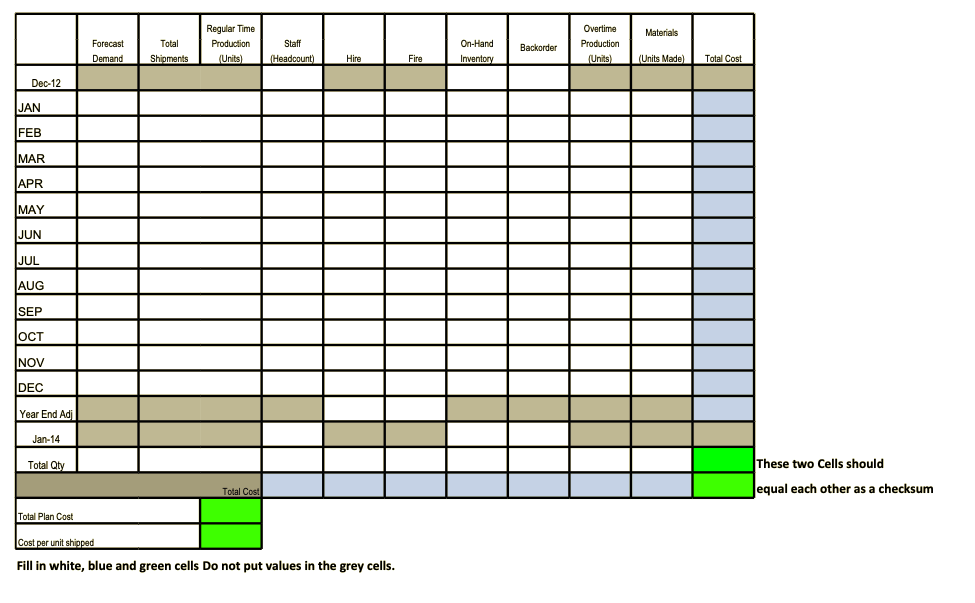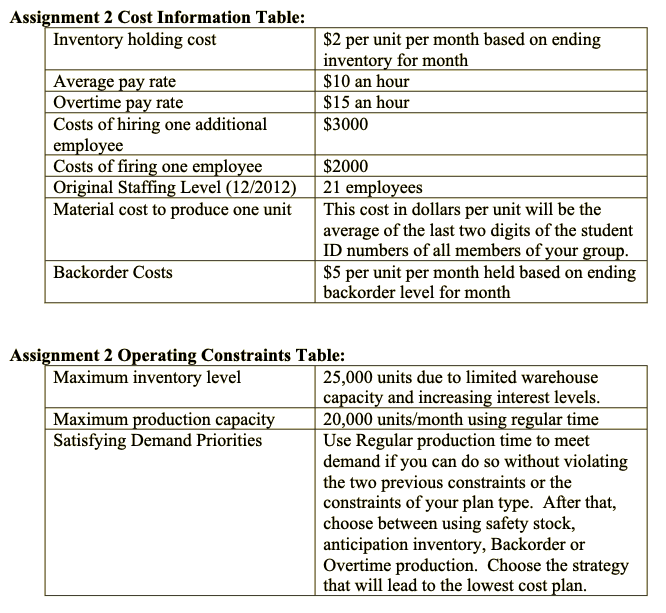Question
BA 357 HW example problem 3 Use the following monthly forecast to create aggregate plan: 2013 Forecast: MIXED PLAN Month Demand 1. 6689 2.7094 3.
BA 357 HW example problem 3
Use the following monthly forecast to create aggregate plan: 2013 Forecast: MIXED PLAN
Month Demand 1. 6689 2.7094 3. 9592 4. 7458 5. 8246 6. 12300 7. 12984 8. 10153 9. 9092 10. 8875 11. 7082 12. 7500
-Assume 20 production days per month (4 weeks of 5 days each)
-The ending inventory (for December of 2012) is 3000 units.
-Assume 0 units on Backorder at the end of 2012
-The number of Units produced by each worker is 200 units per month
-The desired safety stock level is 2000 units (you can only fall below this level to avoid having backorders, even in the Chase Strategy)
-Average pay applies for the first 40 hours an employee works in a week. Overtime pay applies for any time over 40 hours in a given week. The maximum level of overtime any employee can work in a month is 40 hours.
-You must employ whole people - there are no part time employees. (However, you can underutilize)
-Employees do not produce more per month than is required by the plan (ie- No efficiency gains), however than can under produce to satisfy the conditions of the type of plan that you choose.
-The firm wants exactly 4000 units to be left in inventory at the end of the fiscal year (after forecasted December 2013 demand is satisfied). This is a firm requirement for all plans.
-The staffing level at the beginning of 2014 is to be the same as the original staffing level given below (any staffing changes needed to achieve this are made after the forecasted December 2013 demand is satisfied). This is a firm requirement for all plans.
-Any backorder (negative on-hand inventory) is shown as a positive value in the backorder column instead of in the inventory column since it has a different monthly cost per unit. That is, if there is backorder for a period, there will be zero on-hand inventories for that period. Be sure to fulfill backorders as soon as possible in the plan.
MIXED PLAN :


Step by Step Solution
There are 3 Steps involved in it
Step: 1

Get Instant Access to Expert-Tailored Solutions
See step-by-step solutions with expert insights and AI powered tools for academic success
Step: 2

Step: 3

Ace Your Homework with AI
Get the answers you need in no time with our AI-driven, step-by-step assistance
Get Started


